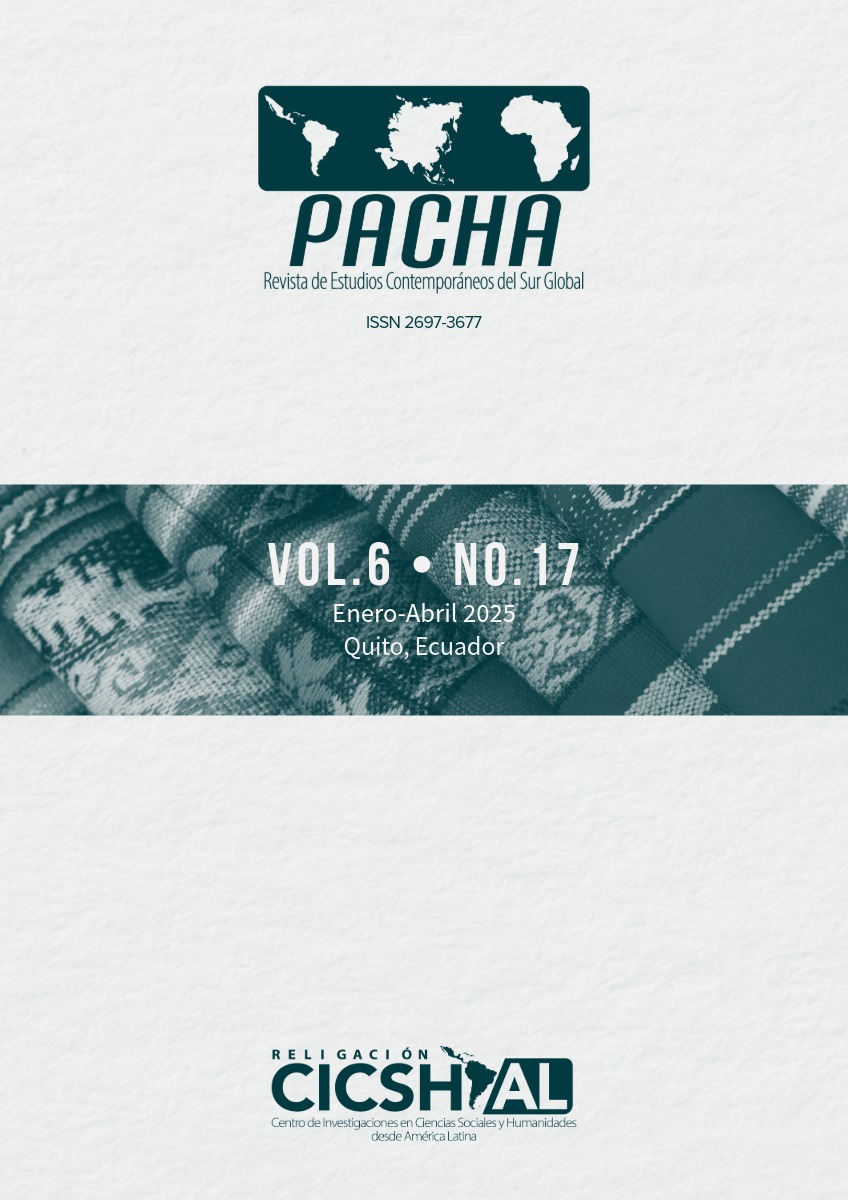Resumo
Nas últimas décadas, o ensino tradicional envolvia principalmente a interação entre professor e aluno. No entanto, hoje em dia, novas abordagens são aplicadas em sala de aula. Neste trabalho de pesquisa, a aprendizagem combinada é analisada, pois mescla práticas de ensino e aprendizagem convencionais e tecnológicas. O estudo examina como esse método afeta a aquisição de gramática entre alunos adultos A2 de inglês como língua estrangeira (EFL) em um centro de certificação em Cuenca, Equador. Portanto, o estudo empregou pré e pós-testes, pesquisas em escala Likert e entrevistas semiestruturadas para avaliar o progresso dos alunos e obter seu feedback. Para medir o aprendizado de idiomas, todos os instrumentos de avaliação foram ajustados aos padrões do Quadro Europeu Comum de Referência para Idiomas (CEFR). Durante seis semanas, oito participantes com idades entre 18 e 35 anos assistiram a três aulas de gramática combinada por semana. Elas incluíram atividades on-line e instrução clássica. Os dados qualitativos ofereceram percepções sobre as experiências dos alunos. Eles destacaram os diferentes benefícios e desafios enfrentados pelos alunos ao aprender gramática por meio da aprendizagem combinada. Os resultados revelaram que a abordagem melhorou o desenvolvimento da gramática e identificou áreas que precisam ser aprimoradas. O estudo contribui para a discussão em andamento sobre o papel da tecnologia no ensino de línguas estrangeiras e fornece recomendações práticas para as práticas de ensino de EFL.
Referências
Akobir, Q., & Akhmedjanova, D. (2023). English grammar: understanding, learning, developing. Zenodo. CERN European Organization For Nuclear Research. https://doi.org/10.5281/zenodo.8052325
Ali, A., Khan, R., & Alouraini, A. (2023). A comparative study on the impact of online and blended learning. SAGE Open, 13(1). https://doi.org/10.1177/21582440231154417
Aravind, B. (2024). Exploring the challenges and opportunities of blended learning in a technology-enabled education environment. Journal of Effective Teaching and Learning Practices, 1(1). https://doi.org/10.70372/jetlp.v1i1.aravind
Deng, M., & Chen, K. (2024). Research on the application of Internet+-based blended teaching mode in English grammar teaching. Applied Mathematics and Nonlinear Sciences, 9(1). https://doi.org/10.2478/amns-2024-2021
Duraipandi, O., & Murugan, A. (2024). Role of Digital Communication in Learning the English language. Recent Research Reviews Journal, 3(1), 258-273. https://doi.org/10.36548/rrrj.2024.1.017.
Eppler, E., & Weichselbaumer, C. (2019). Developing digital literacy in online grammar teaching and learning. Journal of Educational Technology, 15(2), 45–60. https://doi.org/10.xxxx/jet.2019.15.2.45
Fionasari, R. (2024). Blended learning environments: A systematic review of effective strategies in educational settings. International Journal of Multidisciplinary Approach Sciences and Technologies, 1(1). https://doi.org/10.62207/gn00ce77
Fotos, S., & Ellis, R. (1991). Communicating about Grammar: A task-based approach. TESOL Quarterly, 25(4), 605–628. https://doi.org/10.2307/3587079
Garrison, D. R., & Vaughan, N. D. (2008). Blended learning in higher education: Framework, principles, and guidelines. Jossey-Bass.
Graham, C. R. (2006). Blended learning systems: Definition, current trends, and future directions. In C. J. Bonk, & C. R. Graham, (eds.). The handbook of blended learning: Global perspectives, local designs (pp. 3–21). Pfeiffer.
Ginns, P., & Leppink, J. (2019). Special issue on cognitive load theory: Editorial. Educational Psychology Review, 31(2), 255–259. https://doi.org/10.1007/s10648-019-09474-4
Hausmann-Ushkova, N., Shults, O., & Pervova, G. (2024). Providing students with feedback during online language projects. Tambov University Review. Series: Humanities, 29(2), 337–348.
Hockly, N. (2018). Blended learning. ELT Journal, 72(1), 97–101. https://doi.org/10.1093/elt/ccx058
Jia, L. (2012). Comparison between input hypothesis and interaction hypothesis. Journal of Language Studies, 12(1), 26–27.
John-Steiner, V., & Mahn, H. (1996). Sociocultural approaches to learning and development: A Vygotskian framework. Educational Psychologist, 31(3), 191–206. https://doi.org/10.1080/00461520.1996.9653266
Knowles, M. S. (1984). The adult learner: A neglected species. Gulf Publishing.
Krashen, S. D. (1985). The input hypothesis: Issues and implications. Longman.
Long, M. H. (1981). Input, interaction, and second-language acquisition. Annals of the New York Academy of Sciences, 379(1), 259–278. https://doi.org/10.1111/j.1749-6632.1981.tb42014.x
Lourenço, O. (2012). Piaget and Vygotsky: Many resemblances, and a crucial difference. New Ideas in Psychology, 30(3), 281–295. https://doi.org/10.1016/j.newideapsych.2011.12.006
Ma, L., & Lee, C. S. (2021). Evaluating the effectiveness of blended learning using the ARCS model. Journal of Computer Assisted Learning, 37(5), 1397–1408. https://doi.org/10.1111/jcal.12579
Motlagh, M., Zavaraki, E., Vahedi, M., Noroozi, A., Bakhtiarvand, M., & Azizi, Y. (2023). The impact of blended collaborative learning on the English reading comprehension. Randwick International of Education and Linguistics Science Journal, 4(1). https://doi.org/10.47175/rielsj.v4i1.608
Paas, F., Renkl, A., & Sweller, J. (2004). Cognitive load theory: Instructional implications of the interaction between information structures and cognitive architecture. Instructional Science, 32(1), 1–8.
Portales, I., Roldán, E., & Corona, J. (2022). Theoretical perspective of level A2 of the English language. TECTZAPIC. Revista Académico-Científica, 1(1). https://doi.org/10.51896/tectzapic/jsce6479
Qizi, D. (2023). The role of grammar in learning English language. American Journal of Social Sciences and Humanity Research, 3(5). https://doi.org/10.37547/ajsshr/volume03issue05-21
Saidi, F. (2024). On the scope, claims and implicationsof Krashen’s theory. International Journal of Research and Innovation in Social Science, 8(1). https://doi.org/10.47772/ijriss.2024.801184
Sarnato, A., Sari, W., Rahmawati, S., Hidayat, R., & Patry, H. (2024). The evolution of e-learning platforms: From u-learning to AI-driven adaptive learning systems. Journal of Social Science Utilizing Technology, 2(2). https://doi.org/10.70177/jssut.v2i2.1131
Stavre, B., & Pashko, A. (2016). Introducing grammar learning strategies in A2 and B1 classes of English as a foreign language: An Albanian case study. CBU International Conference Proceedings. https://doi.org/10.12955/cbup.v4.795
Susiyawati, E., Erman, E., Astriani, D., & Rahayu, D. (2024). Facilitating flexible learning: A study of students’ perceptions of synchronous and asynchronous blended learning. Journal of Education and e-Learning Research, 11(2). https://doi.org/10.20448/jeelr.v11i2.5676
Vallée, A., Blacher, J., Cariou, A., & Sorbets, E. (2020). Blended learning compared to traditional learning in medical education: Systematic review and meta-analysis. Journal of Medical Internet Research, 22(8). https://doi.org/10.2196/16504
Vygotsky, L. S. (1978). Mind in society: Development of higher psychological processes. Harvard University Press.
Wang, Q., & Huang, Q. (2024). Engaging online learners in blended synchronous learning: A systematic literature review. IEEE Transactions on Learning Technologies, 17(3), 594–607. https://doi.org/10.1109/TLT.2023.3282278
Yajie, C., & Jumaat, N. (2023). Blended learning design of English language course in higher education: A systematic review. International Journal of Information and Education Technology, 13(2). https://doi.org/10.18178/ijiet.2023.13.2.1815

Este trabalho está licensiado sob uma licença Creative Commons Attribution-NonCommercial-NoDerivatives 4.0 International License.
Copyright (c) 2025 Blanca Verónica Palaguachi Sáenz, Manuel Pila




